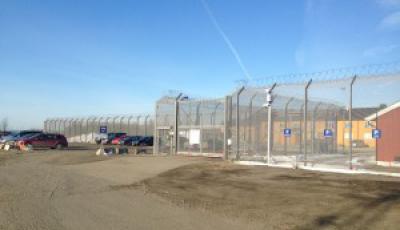Crim/Migration and State Governance: Foreigners in Prison and Detention at Europe’s Northwestern Border
Posted:
Time to read:
In this week’s guest post, Thomas Ugelvik, Postdoctoral Fellow in the Department of Criminology and the Sociology of Law, at the University of Oslo, discusses the findings of a recent paper in the European Journal of Criminology that he has co-authored with Synnøve Ugelvik from the Faculty of Law at the University of Oslo. The paper is a result of the larger ERC-funded research project "Crime Control in the Borderlands of Europe" headed by Border Criminologies’ Advisory Group member, Professor Katja Franko Aas.
‘Crime Control in the Borderlands of Europe’ analyses the impact of the growing emphasis on migration control within the police, prisons and detention facilities. A series of five sub-projects concentrate on the novel hybrid forms of control, at the transnational, nation and local levels, which are emerging as migration control and crime control merge. The basic hypothesis of the project is that migration control objectives contribute to the development of novel forms of punishment and new rationalities of social control that might be called "crimmigration control." What kind of break from traditional criminal justice practices and principles do they represent? And what kind of legal, organizational and normative responses do they require?
My sub-project examines welfare state technologies of power and the inclusionary and exclusionary mechanisms that are employed in institutions of incarceration in the context of increased globalization. Control of migration is, as migration itself, an intrinsically transnational phenomenon. It involves measures within and beyond national and European territories. These practices create novel spaces and notions of territoriality: "in between spaces," borderlands or what Saskia Sassen has called "third spaces." One objective of this project is to examine the spaces where national systems of justice meet their limits. Immigration detention centres represent new, hybrid forms of confinement. A prison dedicated to foreign national prisoners is also a novel institution. The objective is to examine these institutions in their own terms as well as compare and analytically connect them to other forms of state power.

In its overlaps and it discontinuities with the prison, Trandum challenges criminologists to think afresh about incarceration. What are the implications for our understanding of Scandinavian exceptionalism, for instance, when this otherwise inclusive society excludes those without citizenship? How might we understand punishment when it is followed by deportation? And what, if anything, stands between prison and detention when institutions like Trandum grow more and more prison-like? These questions are increasingly being asked in a range of sites around the world. Our work in Norway contributes to that body of literature.
____________________
How to cite this blog post (Harvard style):
Ugelvik T (2013) Crim/Migration and State Governance: Foreigners in Prison and Detention at Europe’s Northwestern Border. Available at: http://bordercriminologies.law.ox.ac.uk/crimmigration-governance. (Accessed [date])/
Share:








